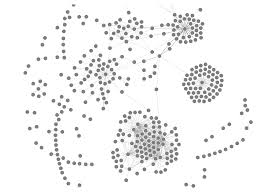Nano_ telecommunicatison Some Applications of Nano Networks and Communication Devices (Nano Ph.D. Microelectronics)
Researcher and author: PhD student Afshin Rashid)
Note: Data transfer between nano-sensors can increase the capabilities and applications of nano-devices in terms of their loneliness in both complexity and performance range. This complex and perfect process with a wide coverage range can be called nano_telecommunicatison.
In the case of nanosensors, their measurement performance requires that they be placed in an environment that has to measure parameters, and the area covered by a nanosensor is limited to the environment . However, a network of nanosensors can cover a wider area and perform more network processing . In addition, there are numerous nanosensor technologies that require external stimulation and measurement to work. Wireless communication between nanosensors and micro and macro equipment can meet this need. There are four major strategies for communicating between nanomaterials :
Acoustic, nano-mechanical, molecular and electromagnetic
Nano-molecular and electromagnetic transmission of information
Molecular methods are the sending and receiving of encoded information in molecules , while electromagnetic communication is the sending and receiving of electromagnetic radiation from various nano -devices. These methods are molecular and electromagnetic , respectively. In the electromagnetic communication method, the electromagnetic communication between the nanosensors is dependent on the development and construction of two important parts, the nano-antenna and its related transmitter transmitter. Graphene-based antennas are used to transmit EM waves . Graphene is a very narrow single-atom plate of carbon-bound atoms located on a crystalline lattice . Due to the very low dimensions of nano sensors, nano-antennas are capable of To be used, the operating frequency must be very high. However, using graphene greatly helps to solve this problem.
Nano Antennas and Nano Communication Devices
The antenna is the primary means of absorbing electromagnetic waves into space and has its own advanced engineering knowledge that is highly developed and extensive . Generally, in order to receive electromagnetic waves in space, the antenna dimensions must be in the order of magnitude of the incoming wavelength to its surface. Of nano-technology includes components and tools that one of them is about one to several hundred nanometers. On this basis, if we are to antennas used in parts of nanoparticles in the range should be expected electromagnetic waves used in communications systems and equipment around several tens of THz which in turn includes the wavelength region of infrared, visible and ultraviolet will be
Author: Engineer Afshin Rashid
PhD student of Nano-Microelectronics at Islamic Azad University, Science and Research Branch, Tehran




